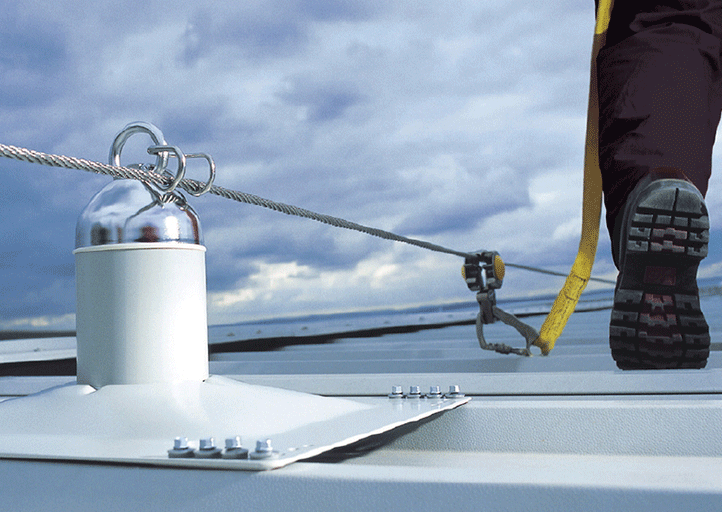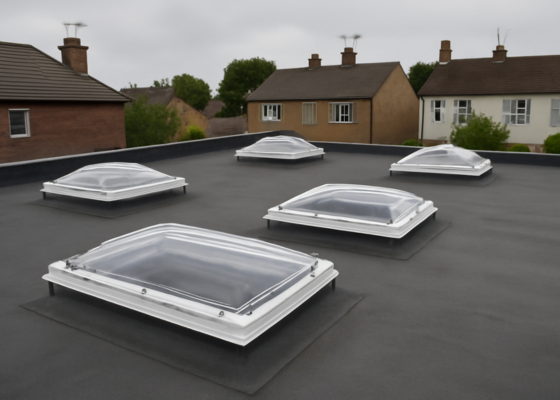Working at height carries significant risks, and ensuring worker safety is critical. Falls from rooftops or elevated surfaces can lead to severe injuries or worse, which is why effective fall protection systems are essential. Guardrails, rooftop walkways and horizontal safety lines all offer enhanced safety. But what type of system should you install?
Why fall protection matters for rooftop safety
Before we get into types of systems, it’s important to point out that falls from height remain one of the most common causes of workplace injuries each year.
Mitigating these risks is vital for those in construction, maintenance, or industries requiring roof access. Installing systems like guardrails, rooftop walkways, and safety lines provides workers with a secure environment and ensures compliance with British and European safety standards.
Guardrails: The first line of defence
When you follow the work at height hierarchy of controls, you should select collective equipment such as guardrails if you can’t avoid working at height.
Guardrails offer a permanent solution to protect workers from the dangers of unprotected edges on rooftops or other elevated areas. By acting as a physical barrier, they prevent accidental falls and are especially useful in areas requiring regular maintenance access.
A further benefit of these edge protection systems is that people don’t need training on using them or PPE and are protected as soon as they access the area.
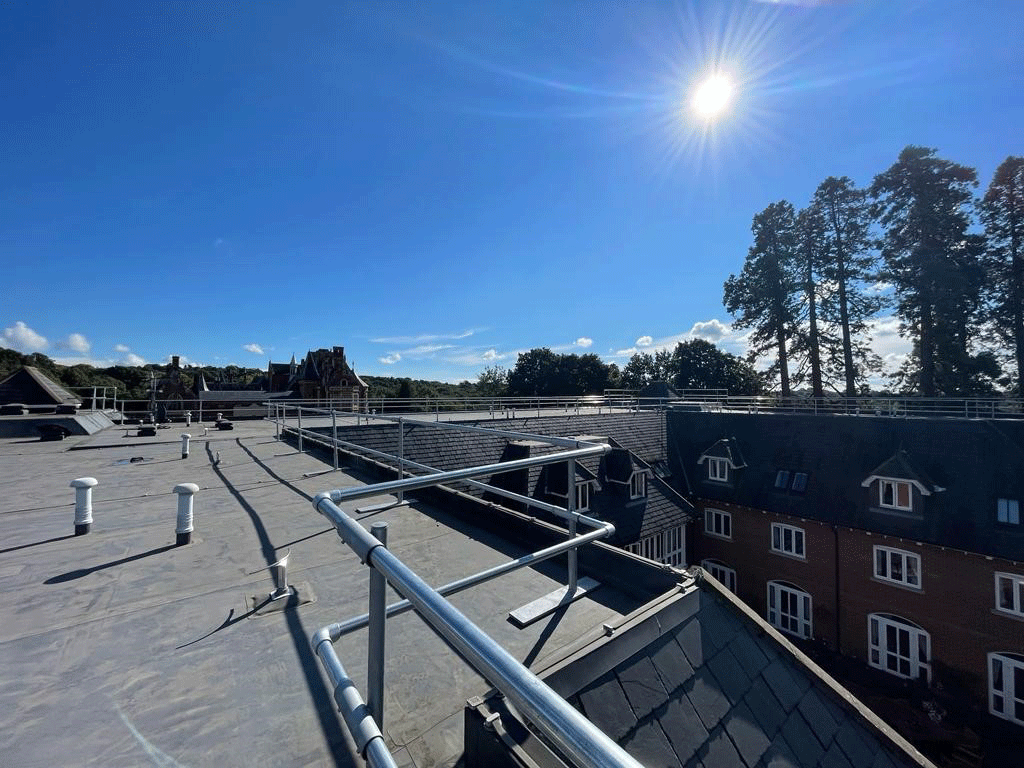
Rooftop walkways: Safe passage across roofs
Rooftop walkways provide a designated, secure path across rooftops, reducing the risk of slips, trips or falls. This is particularly important on roofs with fragile materials or uneven surfaces.
Walkways help workers move safely across the roof without damaging the roofing material or putting themselves at risk.
You can also install additional measures such as guardrails or lifeline systems with the walkway for enhanced safety.
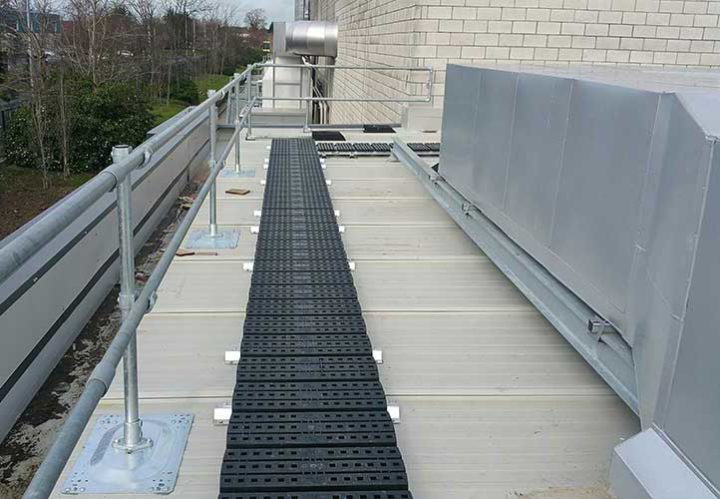
Horizontal safety lines: Ensuring free, safe movement
In areas where workers need to move freely across the rooftop or an elevated surface, horizontal safety lines (also known as horizontal lifelines or mansafe systems), offer a practical solution. These systems provide continuous fall protection while allowing the user to remain mobile by attaching to a secured line that runs horizontally across the work area.
Used for either a fall restraint or fall arrest, horizontal safety lines are ideal for work near roof edges or in areas where guardrails aren’t practical. A full body harness allows workers to carry out tasks while staying securely connected to the safety line.
But, it’s important to understand that horizontal lifelines must only be specified if other forms of protection are not possible. These systems rely on the individual worker correctly using the equipment and associated PPE. So, anyone using a lifeline system must be fully trained in correct use and safe working practices. There is also a legal requirement under the Work at Height Regulations to have a rescue plan in place so a person can be rescued quickly and safely in the event of a fall.
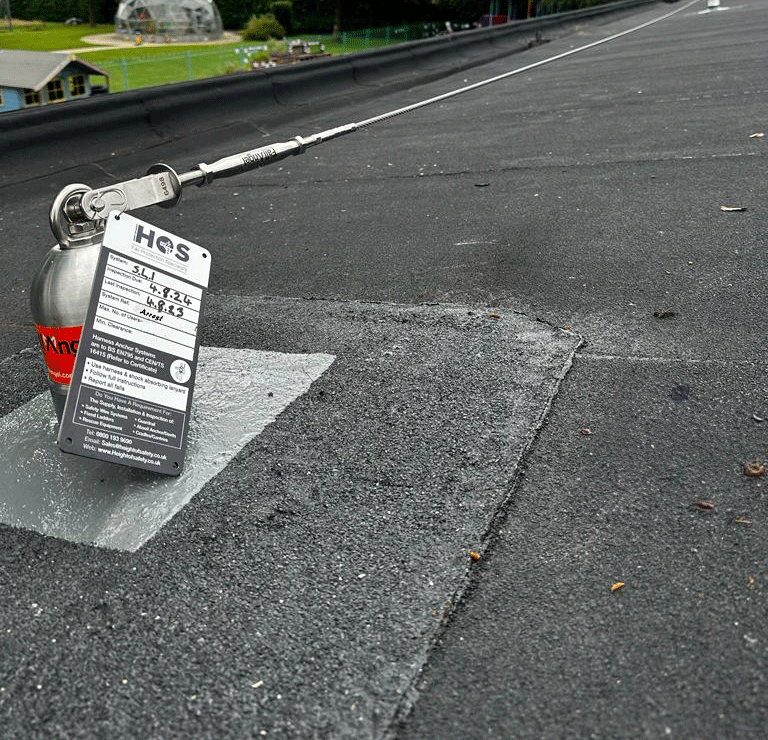
Guardrails, rooftop walkways and life line systems: Creating a safer work environment
Fall protection is critical to workforce safety, particularly in industries that require regular work at height. By implementing systems like guardrails, rooftop walkways, and horizontal safety lines, you can significantly reduce the risk of falls and create a safer working environment for your team and others accessing your roof.
Height of Safety: Your fall protection partner
At Height of Safety, we pride ourselves on being independent fall protection experts. We offer a wide range of services, including supply, installation, testing, and inspection of fall protection systems. Our team will work with you to assess your specific needs and design systems that provide the best possible safety solution.

